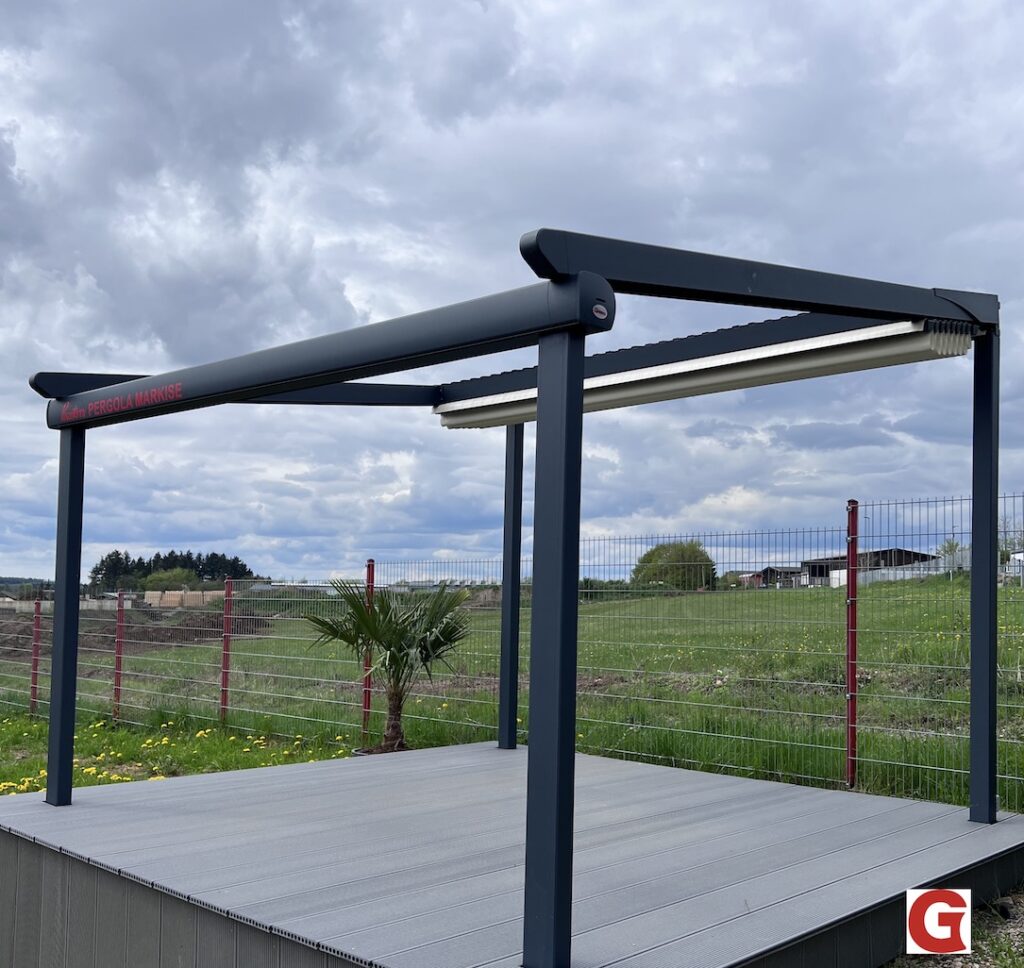Pergola roofs are an increasingly popular choice for outdoor living spaces. They provide a beautiful and functional addition to any garden or patio area, allowing the homeowner to create a unique living space that is both aesthetically pleasing and practical. Pergola roofs are available in a variety of styles, materials, and sizes, making it easy to find one that will fit your specific needs.
In addition to offering protection from the elements, pergola roofs also offer other benefits such as providing shade and increasing privacy while still allowing airflow. Installing a pergola roof requires careful consideration of costs, maintenance requirements, installation methods, and creative design ideas in order to make the most out of this appealing feature.
This article will discuss the benefits of installing a pergola roof along with different types of materials available on the market today, installation considerations, maintenance tips, cost estimates for professional installation services as well as DIY projects that can be done at home. With these details in mind readers will be able to make an informed decision about whether adding this feature is right for them.
Benefits of Pergola Roofs
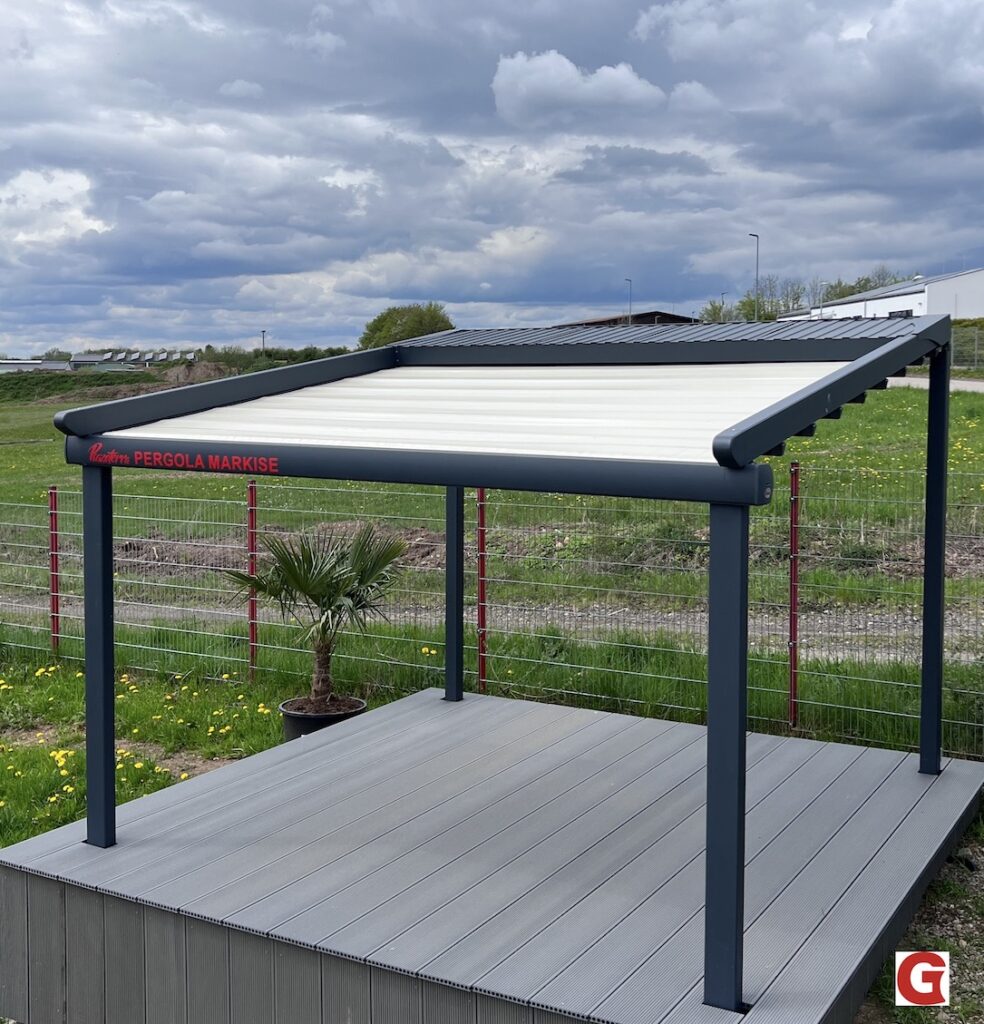
Installing a pergola roof offers numerous advantages to homeowners. Pergola roofs offer an efficient and stylish shading solution for outdoor areas, providing protection from the elements while still allowing light to filter through. They also provide plenty of design options, from traditional wooden structures to more modern designs featuring metal or plastic components.
With a range of materials and styles available, it is easy to find a pergola that complements the existing architecture of the home. A well-designed pergola roof can add value to any property and increase its curb appeal. Not only do they look good, but they are also durable and require minimal maintenance – making them an ideal choice for busy households who want their outdoor space to stay looking great with minimal effort required.
Additionally, they provide shade during hot summer days which can help keep energy costs down by reducing the need for air conditioning in certain parts of the home. Pergolas also provide privacy and security without blocking out natural light entirely; unlike some other forms of shading solutions such as fences or walls, they allow sunlight into the area while still providing privacy from neighbors and passersby.
They are also versatile enough that they can be used in almost any outdoor space; on patios, decks or other landscaped areas such as gardens or swimming pools. In addition to providing practical benefits for homeowners, pergolas have become increasingly popular among people who are looking for ways to create beautiful outdoor living spaces that blend seamlessly with their interior décor scheme.
With so many design options available there is something suitable for everyone’s needs – whether you’re looking for something traditional or contemporary – meaning you can customize your outdoor living area exactly how you want it without compromising on style or function.
Different Types of Pergola Roofs
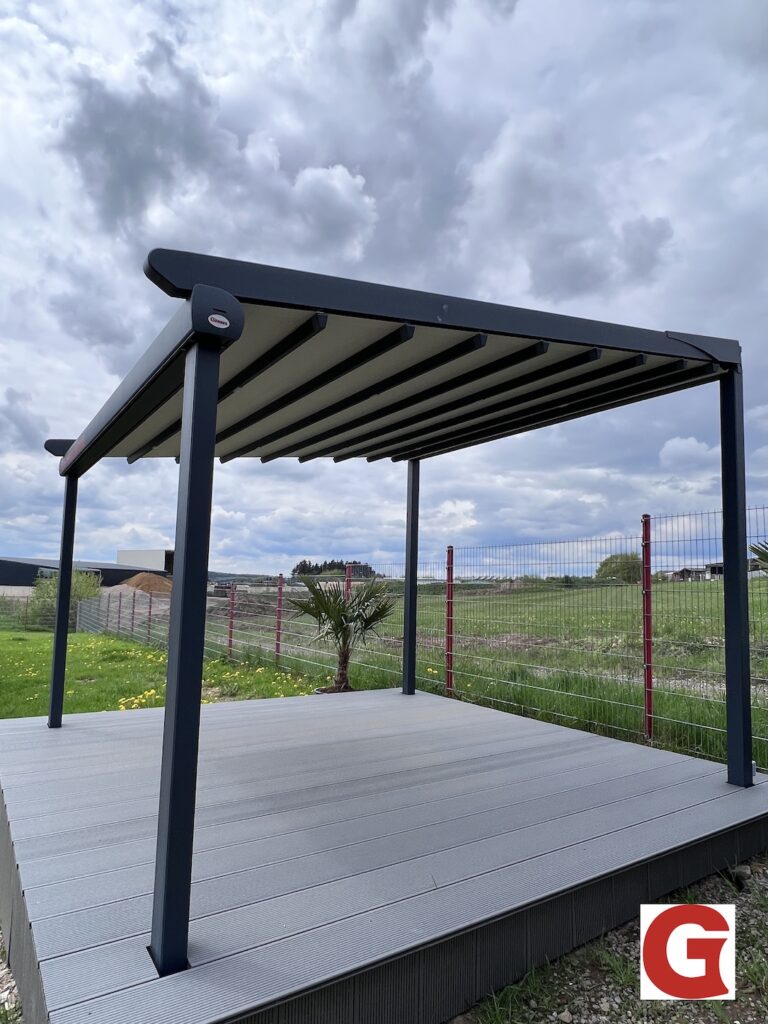
The variety of materials and designs available for pergola roofs provides an array of options to suit individual needs. When it comes to shade options, there are a number of different ways to go about choosing the right material for your pergola roof. Whether you choose a solid or lattice-style roof, the material selection is key to creating an inviting aesthetic with practical functionality.
Wooden pergolas are one option that can be used to create a beautiful outdoor space while providing protection from rain and sun. Natural wood such as cedar is widely regarded as one of the best materials for pergolas because of its durability and resistance to rot. Other popular choices include treated pine, redwood, and teak which all offer unique benefits in terms of aesthetics and cost.
For those looking for more flexibility when it comes to design, fabric-covered roofs provide additional shade options that can be tailored to fit any size or shape. Many people opt for retractable fabric covers that provide adjustable levels of light and privacy depending on the situation. While these covers can be made from a variety of fabrics such as canvas or vinyl, they may not last as long as wooden roofs due to exposure from rain or sun over time.
Metal roofs are another great choice if you’re looking for something durable and low-maintenance. Aluminum is often used because it’s lightweight yet strong enough to withstand harsh weather conditions without corroding over time like other metals might do. However, metal roofs tend to get hot in direct sunlight so some additional insulation may be necessary in order keep the space comfortable during summer months.
With careful consideration given to material selection, homeowners have plenty of options when it comes time designing their perfect pergola roof system. From traditional wooden structures up through modern metal panels, there are many varieties available to achieve both form and function in any outdoor living space setup.
Installation Considerations
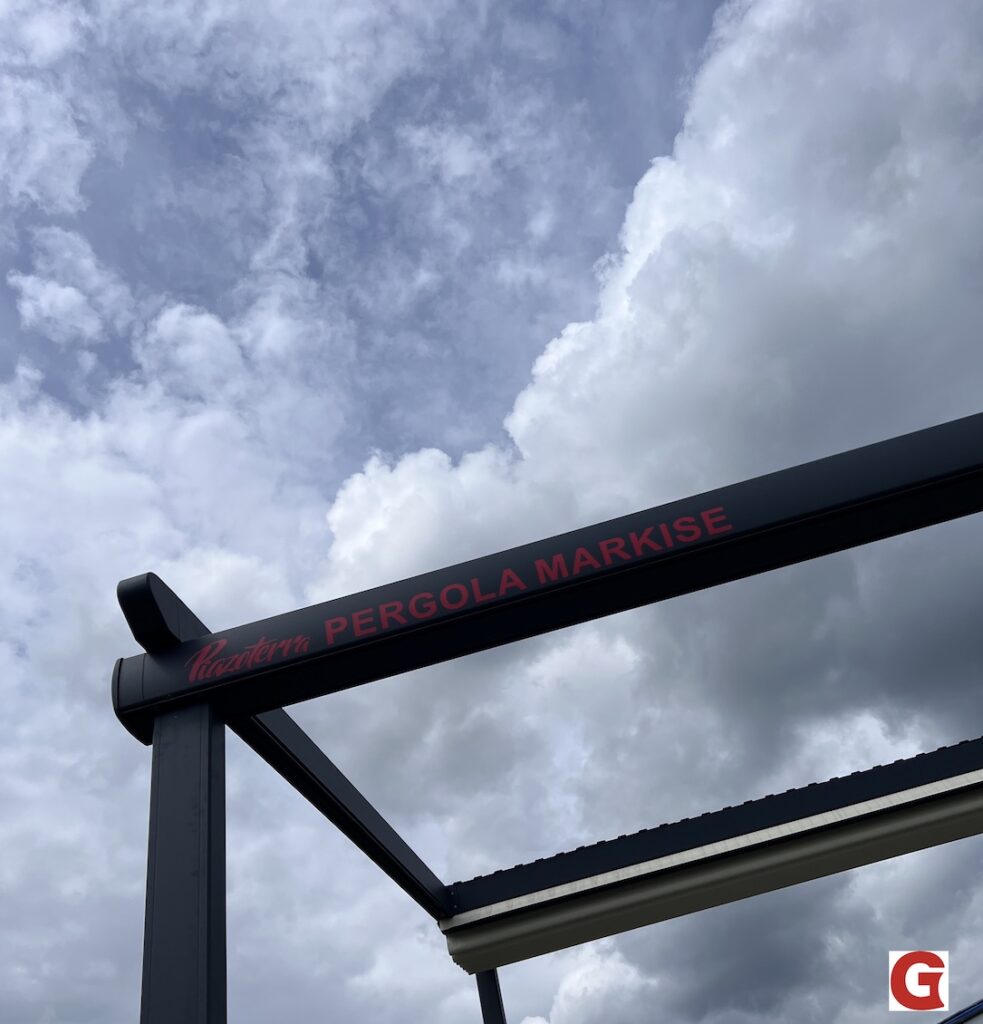
Considering the installation of a pergola roof requires careful planning to ensure its durability and aesthetic appeal, as well as its ability to provide adequate protection from the elements. It is important to consider several points when selecting materials for a pergola roof in order to make sure it is weatherproofed properly:
- Material selection – Choosing materials that are suitable for different climates and types of weather.
- Structure – Ensuring that the structure is strong enough to withstand wind and snow loads.
- Roofing type – Selecting a roofing material that is both aesthetically pleasing and durable.
- Ventilation – Making sure there is sufficient ventilation so that air can circulate freely underneath the roof.
In addition, proper installation techniques must be employed during assembly in order for the pergola roof to perform optimally. This includes using appropriate fasteners, making sure all components are securely attached, and ensuring any cuts made are precise in order to maximize efficiency and safety. It’s also recommended that an experienced contractor be consulted when installing a pergola roof, as they will have knowledge on how best to utilize weatherproofing measures such as sealants or flashing tape.
When selecting materials for a pergola roof, it’s important to take into account factors such as cost, maintenance requirements, fire resistance ratings, UV protection levels, sound absorption qualities and more. Additionally, some materials may require special tools or equipment for installation which should also be taken into consideration before making any decisions about what kinds of materials should be used.
Taking all these things into account will help ensure that your new pergola roof looks great while providing effective protection against rain or other harsh conditions.
Lastly, once your new pergola roof has been installed you’ll need to focus on proper maintenance and care in order to keep it looking its best over time. Regular inspections should be performed in order to identify any potential issues before they become larger problems down the line which could result in costly repairs or replacements being necessary further down the road. With proper care your new pergola roof can remain beautiful while providing years of reliable service with minimal effort on your part!
Maintenance and Care
Proper maintenance and care of a pergola roof is essential to ensure its longevity and performance. To keep the roof looking beautiful, there are certain cleaning techniques that should be implemented on a regular basis. Additionally, it’s also important to know when and how to perform any necessary repairs in order to maintain the structure. Below is an overview of both cleaning techniques as well as repair tips for pergola roofs:
| Cleaning Techniques | Repair Tips |
|---|---|
| Remove debris such as leaves or branches regularly | Inspect wood for signs of rot, splitting or warping annually |
| Rinse with a garden hose after storms or heavy winds | Replace damaged pieces with new ones as soon as possible |
| Use a pressure washer periodically (depending on material) | Tighten loose screws/fasteners if necessary |
It’s especially important to clean your pergola roof before winter arrives – this will help prevent ice buildup from forming on the surface. Additionally, having your roof inspected for damage by a professional once every year is also recommended. This helps identify any problems early before they become more expensive repairs down the line. A regular maintenance routine can ensure your pergola remains strong and functional for years to come.
By following these simple steps, you can make sure you get the most out of your investment in a pergola roof while enjoying its beauty and functionality at all times. The next section will discuss the cost associated with installing one of these structures so that you can budget accordingly when considering this project.
Cost of Installing a Pergola Roof
Installing a pergola roof can be a costly undertaking, and it is important to consider all associated expenses before beginning the project. Knowing the cost effectiveness of such an endeavor is essential for budgeting tips and planning for potential budgetary issues.
The costs associated with installing a pergola roof may include purchasing the materials, hiring a contractor, and any related fees or permits required for installation. Depending on the size of the space being covered, materials can range from wood to metal or vinyl, each with its own unique price point.
Hiring a contractor can also be expensive but may be necessary if one does not have experience in construction or carpentry. Additionally, certain localities require building permits that must be obtained prior to installing any type of structure on your property.
When considering these costs it is important to remember that long-term savings could exceed initial investments due to increased energy efficiency from shade provided by pergola roofs. While traditional roofs are typically more expensive than those made from wood or metal, they often provide better insulation which can result in significantly lower heating and cooling bills throughout the year.
Furthermore, many home insurance companies offer discounts when homeowners take measures to make their homes more energy efficient so this too should be taken into consideration when calculating total cost of installing a pergola roof.
In addition to these upfront costs there are also ongoing maintenance expenses that will need to be considered as well such as repairs due to weather damage or normal wear and tear over time. This means that regular inspections should take place in order to identify any potential issues early on before they become larger problems requiring further repair later on down the line.
All of these factors need to be factored into one’s budget planning efforts when deciding whether or not installing a pergola roof is worth it in terms of both cost effectiveness and long-term benefit potentials compared with other options available.
Taking all associated costs into account before making any decisions regarding installation is key because while having a beautiful outdoor living area created by a pergola roof can add great value aesthetically as well as functionally, going over budget during installation could lead one down an unpleasant road filled with stress later on down the line if things aren’t planned out correctly from start off.
This makes it even more important for anyone looking at adding this feature onto their home plan ahead financially accordingly in order ensure success moving forward no matter what route they choose.
Creative Ways to Utilize a Pergola Roof
Incorporating a pergola roof into one’s home can bring about an array of creative and practical benefits that can transform outdoor living spaces into something truly unique. Landscaping ideas, decorative accents, and even structural support can all be accomplished with a well-designed pergola roof. Depending on the type of material used to construct the roof, homeowners are able to customize their outdoor living area in ways that are both aesthetically pleasing and structurally sound.
Wooden pergolas provide an attractive accent piece for any backyard or patio, offering shade from direct sunlight while allowing natural light to filter through its slats. A wooden structure also allows homeowners to add climbing vines or hanging plants along its beams, adding extra visual interest while providing additional protection from the sun.
Metal pergola roofs offer more protection from rain and snow than wood-based structures because they are less porous and feature a sturdier framework. For those seeking greater privacy in their outdoor space, metal roofs may be ideal as they serve as an effective barrier against prying eyes while still allowing for some air circulation between posts. Additionally, metal roofs may last longer than wooden ones due to their increased resistance to rot or insect infestation.
No matter what type of material is chosen for a pergola roof, it should always be installed by professionals for maximum safety and structural integrity. With proper maintenance and care over time, these versatile structures can help create inviting outdoor spaces perfect for socializing with friends and family year round without sacrificing style or functionality.
By transitioning seamlessly into DIY projects such as painting or staining the structure itself–or simply adding colorful cushions–one can further customize their space to suit individual tastes and preferences without having to worry about compromising structural integrity.
DIY Pergola Roof Projects
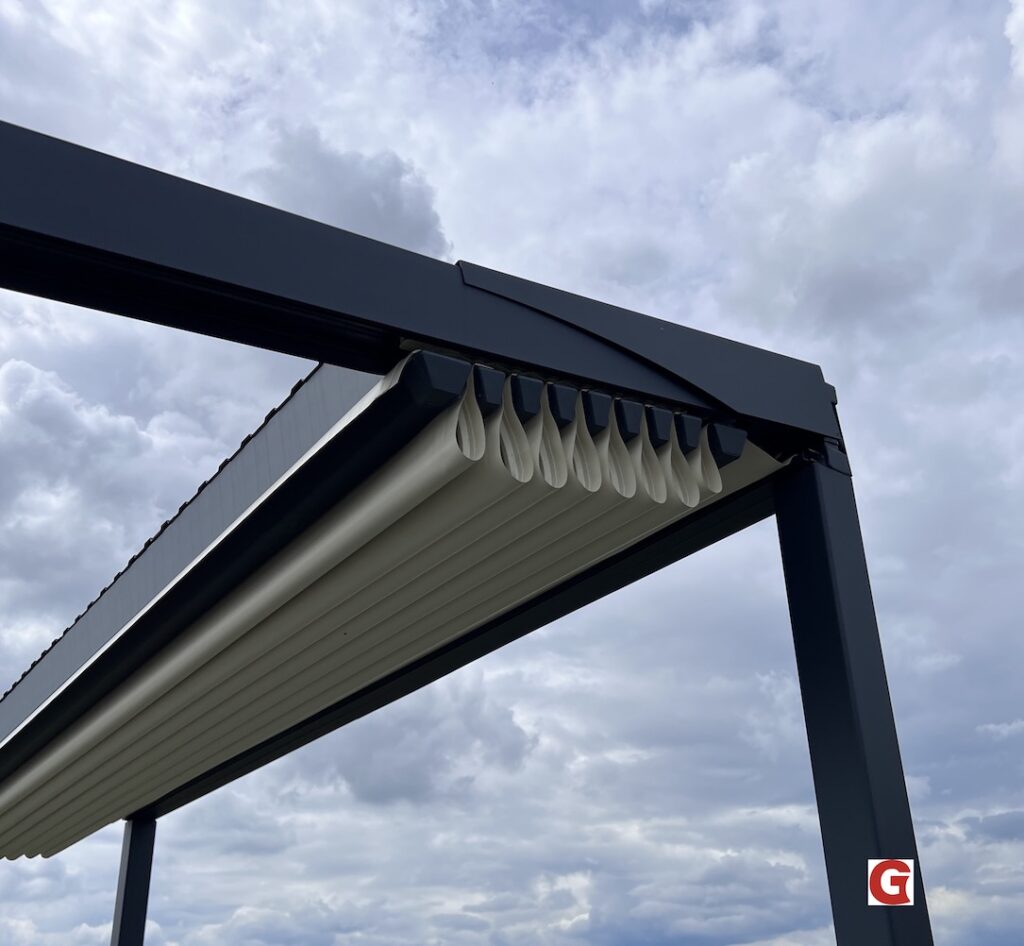
DIY pergola roof projects can be a great way to customize an outdoor living area while still ensuring structural integrity and safety. For example, one could install colorful cushions along the beams of a wooden pergola roof to add visual interest to their backyard patio space.
Another DIY project is weatherproofing a pergola roof with materials such as paint or sealant. This will help protect against water damage and make the roof last longer.
Creative homeowners can also explore different design ideas for their pergolas, such as adding trellises or decorative woodwork around the edges of the frame. This can create an eye-catching feature that adds character to any garden space.
Finally, utilizing fabrics like curtains or screens helps increase privacy and provide shade from direct sunlight without sacrificing style or aesthetics in your outdoor living area. With these simple DIY projects, homeowners can easily personalize their pergola roofs to reflect their unique tastes and preferences.
Finding Professionals for Installing a Pergola Roof
Professionals may be consulted to ensure that the construction of a pergola roof is done correctly, providing a safe and aesthetically pleasing addition to an outdoor living space. With their expertise, they can help homeowners determine the proper size and shape of the structure that will best suit their needs while also adhering to local building codes. Professionals are also experienced in securing permits from local governments for any building projects, including pergolas. They can provide advice on selecting quality materials for use in constructing a sturdy pergola roof that will last through all kinds of weather conditions. Furthermore, professionals can offer suggestions for creating unique designs or adding decorative features such as lighting or vines to enhance the beauty of the pergola roof.
Comparing quotes from multiple contractors is essential when hiring someone to install a pergola roof. Homeowners should ask potential contractors questions about their experience and reputation in order to find one who meets their specific requirements. It’s also important to get references so that past clients’ experiences with the contractor can be assessed prior to making a decision. Additionally, it is helpful to obtain detailed estimates so that there are no surprises once work begins onsite.
Finally, making sure that all parties involved in the project sign contracts outlining expectations and payment terms helps protect both contractor and homeowners alike against miscommunication or misunderstandings down the line.
When planning an outdoor living space with a pergola roof, it pays off for homeowners to consult professionals with experience installing them correctly and safely. Comparing quotes from multiple contractors while taking into account each one’s level of expertise allows homeowners to choose wisely when finding someone suitable for their project needs. Getting references and details estimates helps ensure an efficient installation process while signing contracts provides added security throughout the entire process as well as afterwards when enjoying a newly installed beautiful outdoor living area complete with an elegant pergola roof overhead!
Frequently Asked Questions
How long does a pergola roof typically last?
A pergola roof is like a protective shield, offering durable climate resistance and maintenance ease. Its longevity depends on the materials used and how well it is taken care of.
With regular upkeep, a quality built pergola roof can last for many years with only minimal repairs needed. Constructed out of strong weather-resistant materials such as wood or metal, properly installed and maintained pergolas are designed to be long-lasting without losing their beauty or functionality.
With its timeless elegance, a pergola roof offers an inviting atmosphere that can help create an oasis for outdoor living spaces where family members and friends can relax and enjoy each other’s company.
What are the best materials for a pergola roof?
When installing a pergola roof, it is important to choose materials that are durable and aesthetically pleasing. Popular choices include wood, vinyl, PVC, and metal.
Wood is a natural material choice for pergola roofs due to its affordability and availability in different shapes and sizes. Vinyl, PVC, and metal offer added durability while also being more resistant to weather damage than wood.
Design options are plentiful with these materials as they can be cut into various shapes or used in combination with one another for more intricate designs.
When selecting the best material for your pergola roof, consider the climate you live in as well as the look you are trying to achieve. With careful consideration of your needs and preferences, you will be able to find a material that meets both form and function while adding beauty to your outdoor space.
Can a pergola roof be used to protect against rain and snow?
Installing a pergola roof can provide protection against rain and snow, depending on the design benefits and techniques used. The design of the roof should take into account the climate in which it will be installed to ensure adequate protection from precipitation.
There are several different approaches that can be taken when installing a pergola roof, such as using sloped rafters or an angled gutter system. Additionally, there are various materials that can be used for the roof, including metal sheeting, canvas or polycarbonate sheets. Each of these materials offers unique benefits in terms of weather protection and aesthetic appeal.
Ultimately, with careful consideration of the installation techniques and design benefits available for a pergola roof, it is possible to create a structure that provides adequate protection from rain and snow while also enhancing the beauty of your outdoor space.
Is it possible to install a pergola roof over an existing deck or patio?
Pergolas have long been a symbol of outdoor beauty and elegance, providing an aesthetic enhancement to any backyard or patio. But can they be used to create functional protection from the elements as well?
The answer is yes – it is possible to install a pergola roof over an existing deck or patio. There are several methods for doing so, including direct attachment to the existing structure or building a freestanding pergola over the space.
Additionally, ventilation options should be considered when designing your pergola roof in order to ensure proper air circulation while still providing adequate protection. With careful planning and thoughtful design, homeowners can create a stunning and functional pergola roof that will last for years to come.
Are there additional costs associated with installing a pergola roof?
When it comes to installing a pergola roof, there are additional costs that need to be taken into consideration. Depending on whether you undertake the project as a DIY or hire a professional for the installation, you will have to factor in labour costs and potential materials that may need to be purchased.
There are also ongoing maintenance requirements for pergola roofs, such as periodically checking the structure for any signs of wear and tear or damage, replacing bolts and screws if necessary, and cleaning off debris regularly. It is important to consider these costs when deciding if a pergola roof is right for your home.
Conclusion
Pergolas are a great choice for homeowners looking to add beauty and functionality to their outdoor space. The installation process is relatively simple and there are many types of pergola roofs available to choose from, each with its own unique benefits.
Maintenance is easy and costs can be kept low if the project is done by a professional or as a DIY project. Furthermore, when installed correctly, pergolas can last upwards of 25 years or more.
This long-lasting durability paired with the variety of creative uses makes it clear that pergolas are an excellent option for any homeowner. With this in mind, investing in a pergola roof may be one of the best decisions you make for your yard.

